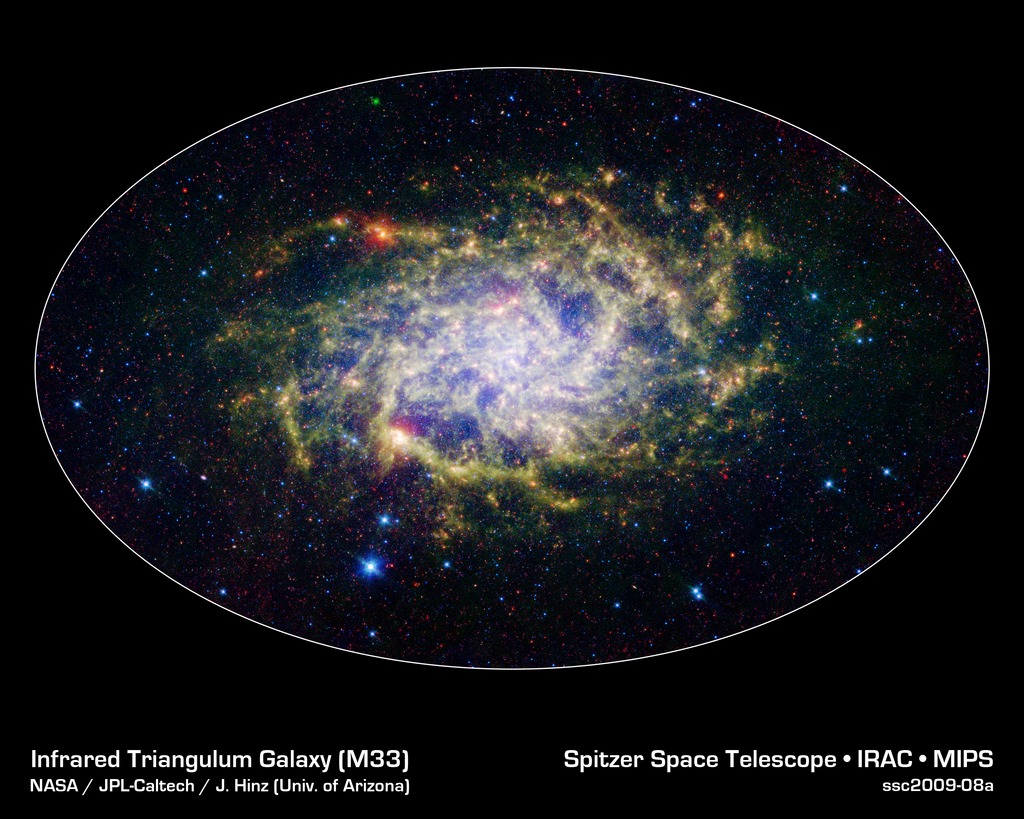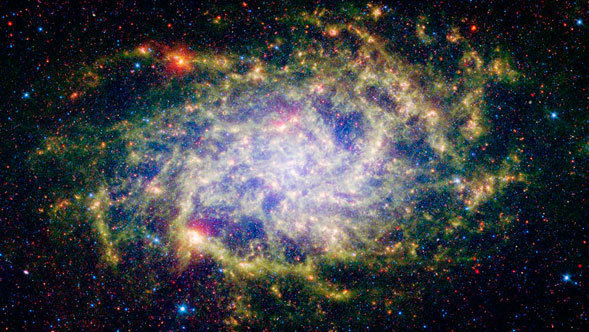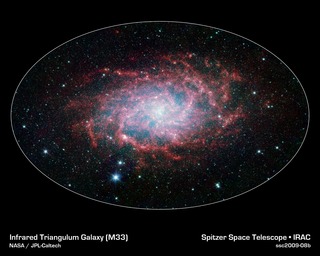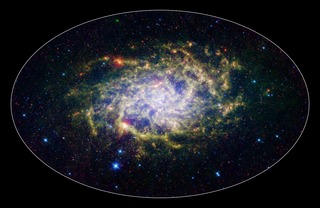
Credit: NASA / JPL-Caltech / J. Hinz (Univ. of Arizona)
Observation • April 3rd, 2009 • ssc2009-08a
ssc2009-08a
One of our closest galactic neighbors shows its awesome beauty in this new image from NASA's Spitzer Space Telescope. M33, also known as the Triangulum Galaxy, is a member of what's known as our Local Group of galaxies. Along with our own Milky Way, this group travels together in the universe, as they are gravitationally bound. In fact, M33 is one of the few galaxies that is moving toward the Milky Way despite the fact that space itself is expanding, causing most galaxies in the universe to grow farther and farther apart.
When viewed with Spitzer's infrared eyes, this elegant spiral galaxy sparkles with color and detail. Stars appear as glistening blue gems (several of which are actually foreground stars in our own galaxy), while dust rich in organic molecules glows green. The diffuse orange-red glowing areas indicate star-forming regions, while small red flecks outside the spiral disk of M33 are most likely distant background galaxies. But not only is this new image beautiful, it also shows M33 to be surprising large - bigger than its visible-light appearance would suggest. With its ability to detect cold, dark dust, Spitzer can see emission from cooler material well beyond the visible range of M33's disk. Exactly how this cold material moved outward from the galaxy is still a mystery, but winds from giant stars or supernovas may be responsible.
M33 is located about 2.9 million light-years away in the constellation Triangulum. This is a three-color composite image showing infrared observations from two of Spitzer instruments. Blue represents combined 3.6- and 4.5-micron light and green shows light of 8 microns, both captured by Spitzer's infrared array camera. Red is 24-micron light detected by Spitzer's multiband imaging photometer.
Attendees of the Peyton Rhodes Lecture Series were treated to a preview unveiling of this image at Rhodes College in Memphis, Tennessee, and will be on display as an addition to the "From the Earth to the Universe" image exhibition at the Memphis Public Library.
About the Object
- Name
- Triangulum Galaxy • Messier 33 • M33 • NGC 598
- Type
- Galaxy > Type > Spiral
- Galaxy > Activity > Normal
- Distance
- 2,900,000 Light Years
Color Mapping
| Band | Wavelength | Telescope |
| Infrared | 3.6 µm | Spitzer IRAC |
| Infrared | 4.5 µm | Spitzer IRAC |
| Infrared | 8.0 µm | Spitzer IRAC |
| Infrared | 24.0 µm | Spitzer MIPS |
Astrometrics
- Position (J2000)
- RA =1h 33m 54.9s
- Dec = 30° 39' 12.7"
- Field of View
- 0.0 x 0.0 arcminutes
- Orientation
- North is 75.2° left of vertical







